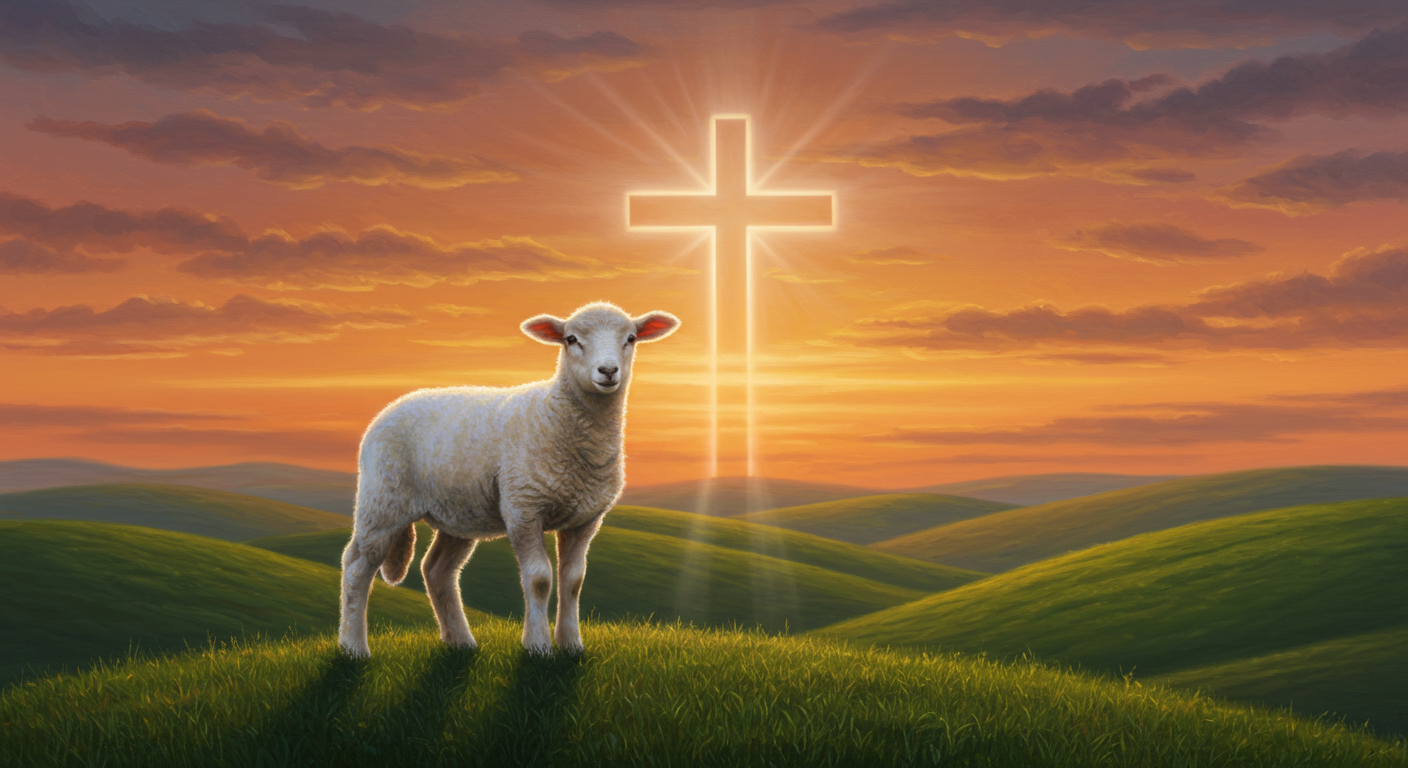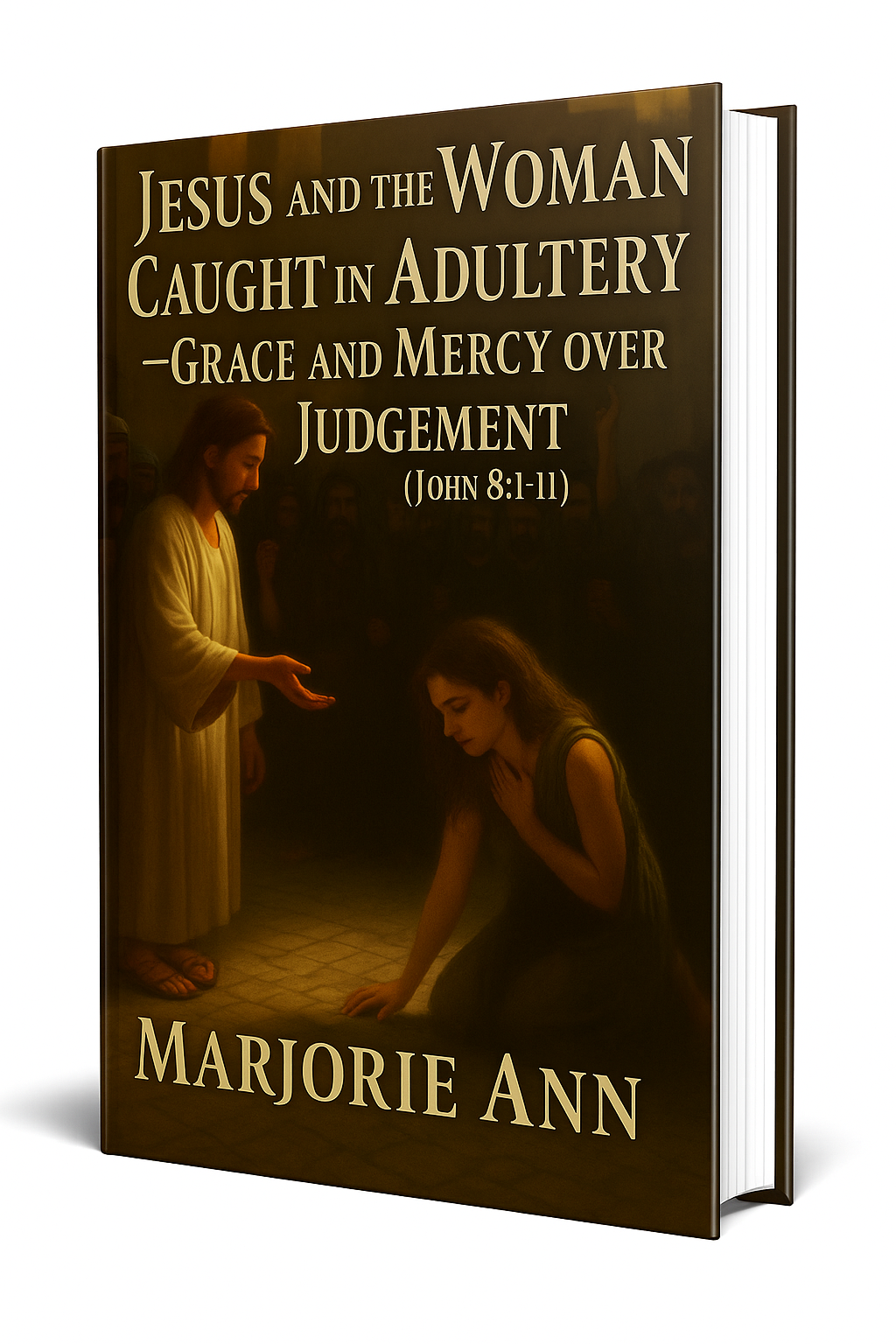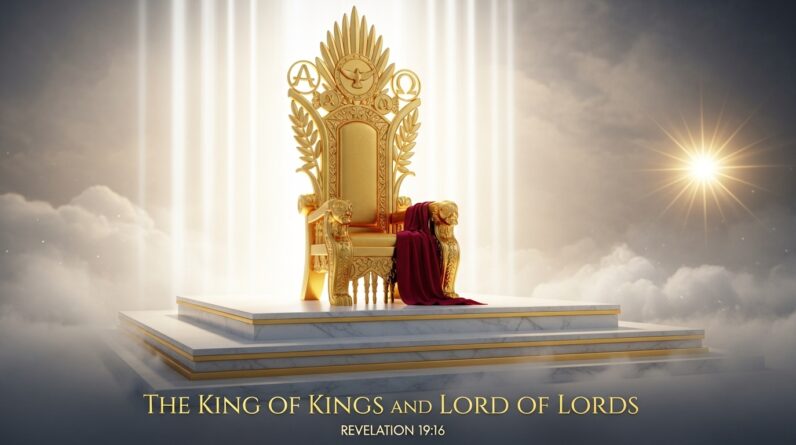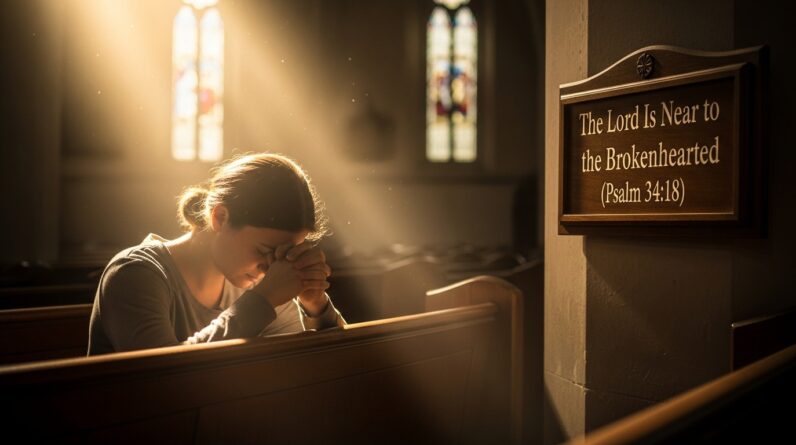The Lamb Of God (John 1:29)
When John the Baptist looked at Jesus and declared, “Behold, the Lamb of God, who takes away the sin of the world!” he gave you a short sentence with long, life-changing implications. That phrase—The Lamb of God—pulls you into a story that spans the Old Testament sacrificial system, prophetic expectation, Jesus’ life and death, and the ongoing reality of redemption for anyone who believes. In this article you’ll explore what that title means, why it matters for your faith and life, and how it shapes worship, confession, and hope.
Reading John 1:29 in context
To start, read the moment itself: John 1:29. John’s witness is short and intentional: he points to Jesus and gives Him a name loaded with sacrificial language. When you read the phrase in the original moment, you should imagine a prophetic voice in the wilderness introducing the Messiah not as a political liberator but as the one who will bear sin the way a sacrificial lamb bore another’s guilt.
The Jewish sacrificial background you need to know
The idea of a lamb as a means of atonement was deeply rooted in Jewish worship. From the Passover lamb in Egypt to the daily and festival sacrifices at the temple, lambs played a recurring role in expressing God’s provision and people’s dependence. Consider the Passover: God instructed Israel to sacrifice a spotless lamb and mark the doorposts so death would pass over them (Exodus 12:3–7). When you keep that background in mind, John’s declaration reads like a trumpet blast: Jesus is the fulfillment of the richest symbol of redemption Israel had.
The prophetic foreshadowing in Isaiah
Isaiah 53 gives you one of the clearest prophetic portraits of the Suffering Servant who bears sin and in whose wounds you find healing. Read it and watch how strikingly the imagery lines up with the title The Lamb of God: “He was pierced for our transgressions” and “the Lord has laid on him the iniquity of us all” (Isaiah 53:4–6). When you connect Isaiah with John’s proclamation, you’re seeing God’s plan threaded across centuries—an image cultivated in prophecy now realized in the person of Jesus.
Typology: how lambs point to Jesus
Typology is the way earlier stories or rituals in Scripture point forward to fulfillment. The sacrificial lambs—the Passover lamb, the daily burnt offerings, the scapegoat—were not meaningless rituals. They were types, visual and ritual clues, teaching you about substitution, identification, and removal of sin. The Passover lamb’s blood spared life (Exodus 12:3–7). The scapegoat carried Israel’s confessed sin out into the wilderness (Leviticus 16:20–22). When John calls Jesus the Lamb of God, he’s pointing you to a living fulfillment of those types.
Why does the title emphasize substitution?
At the heart of The Lamb of God is substitution: Jesus takes on what you deserve so you can receive what you don’t. Scripture repeatedly explains this transaction. Paul writes that God presented Christ as a sacrifice of atonement through faith, to demonstrate His righteousness (Romans 3:23–25). You can see substitution also in 2 Corinthians: “God made him who had no sin to be sin for us, so that in him we might become the righteousness of God” (2 Corinthians 5:21). The Lamb of God language compresses that entire theological reality: he dies in your place.
The Lamb’s sinlessness and perfect obedience
A sacrificial system required an unblemished lamb. That requirement pointed to the necessity of sinless perfection in the substitute. The New Testament insists that Jesus’ person matched that demand; He was without sin, a spotless sacrifice for sinners. Hebrews explains that Christ, as High Priest and perfect sacrifice, entered the heavenly sanctuary once for all by his own blood, securing eternal redemption (Hebrews 9:11–14). When you consider The Lamb of God, remember that his worthiness is not a metaphor: his purity is the basis for true and effective atonement.
The blood language and redemption
Blood imagery is central and unsettling, but it’s vital for your understanding of redemption. The Bible repeatedly links blood to life and covenant. The New Testament says you were bought with a price—the precious blood of Christ, like that of a lamb without blemish or defect (1 Peter 1:18–19). You should not shrink from this language; if you accept it, you accept that your rescue involved a real cost and a real exchange. The Lamb of God’s blood is not mere symbolism; it secures the forgiveness that changes your status before God.

The Lamb is both sacrifice and priest
One of the remarkable realities is that Jesus is both the offering and the one who offers. In the Old Testament, priests offered sacrifices on behalf of the people; in Christ, the distinctions shift because He is both High Priest and the perfect sacrifice. Hebrews demonstrates this by showing Christ’s priestly and sacrificial roles, enabling you to enter God’s presence with confidence because the price has been paid and the priestly intercession secured (Hebrews 9:11–14). When you refer to Jesus as the Lamb of God, you’re acknowledging that he accomplishes both sides of reconciliation.
John the Baptist’s intent and testimony
John the Baptist was not making a casual remark. His vocation was to prepare the way, and his words function as a theological interpretation. When he says, “Behold, the Lamb of God,” he identifies Jesus’ primary mission: to deal with sin. John’s testimony sets the tone for how you should hear Jesus—first and foremost as redeemer (John 1:29). If you’re seeking to follow Jesus, John’s phrase invites you to see through the lens of atonement and grace.
The universality of “takes away the sin of the world”
Notice the scope in John’s sentence: “the sin of the world.” That’s not limited to one ethnicity, nation, or moral category. It means that the remedy Jesus brings is cosmically sufficient. Scripture echoes this universal reach: “God so loved the world that he gave his one and only Son” (John 3:16). When you internalize The Lamb of God as a solution offered to the world, you’re invited into a mission-shaped life—evangelism, mercy, and cross-cultural compassion flow from that truth.
How the New Covenant fulfills the sacrificial system
You may wonder: if Jesus is the Lamb of God, what happens to the old system? The New Testament explains not that the old was useless, but that it was preparatory and pointed to the definitive. Jesus inaugurates a New Covenant, sealed in his blood, that accomplishes what repeated animal sacrifices could never do permanently. The writer to the Hebrews explains that Christ’s one sacrifice cleanses the conscience and removes the continual need for animal offerings (Hebrews 9:11–14). For you, that means you don’t rely on ritual repetition for acceptance—you rely on Christ’s once-for-all atonement.
The Lamb and justification: righteousness received
When you accept the Lamb of God, the doctrine of justification becomes personal. Justification is God declaring you righteous because of Christ’s work. Paul ties this to faith: you are justified by faith in the accomplishing work of Christ, not by your own merit (Romans 3:23–25). The Lamb’s death and resurrection change your legal standing before God; this is not merely a moral boost or an inspirational example—it’s the basis for a restored relationship.
The Lamb and sanctification: being changed
Calling Jesus the Lamb of God doesn’t end at your legal status. It also fuels your ongoing transformation. Because you are reconciled, you’re invited into a process of becoming more like the One whose sacrifice you’ve embraced. The presence of the Lamb ignites repentance, growth, and moral reorientation. Scripture says that those redeemed by the Lamb will reflect his character: mercy, humility, and obedience. When you live as someone justified by the Lamb’s blood, your life will increasingly bear the fruit of that new identity.
The Lamb and worship: how you respond
When worship in your context centers on The Lamb of God, everything shifts. Worship becomes not just praise for God’s attributes but adoration focused on the person who reconciled you. Revelation offers a dramatic picture of this: in heaven, creatures and elders worship the Lamb who was slain, singing his worthiness to receive power and honor and glory (Revelation 5:6–14). Your worship should be shaped by this cosmic praise; when you sing or pray, let the reality of the Lamb’s work inform your gratitude and awe.
Communion and the Lamb: memory and presence
Christian worship practices remember the sacrifice of the Lamb. The Lord’s Supper intentionally points you back to Jesus’ body and blood, given and shed for you. When you take communion, you’re participating in a tangible remembrance of the Lamb’s atonement and a proclamation of his return (1 Corinthians 11:23–26). For you, this sacrament is not mere symbolism alone; it’s a communal and spiritual participation in the reality of what the Lamb has accomplished.
Assurance of salvation anchored in the Lamb
If you wrestle with doubts about forgiveness, anchor yourself to the objective work of The Lamb of God. The New Testament gives you reasons for assurance, not in yourself but in Christ: his death, resurrection, and intercession secure your standing. Peter’s reminder that you were redeemed with the precious blood of Christ offers you a certainty that is not wishful thinking (1 Peter 1:18–19). When you doubt, rehearse the cross and the promises attached to the Lamb’s work.
The ethical implications: freedom for service, not license for sin
Understanding The Lamb of God should fuel humility and service, not moral laxity. Paul explicitly combats the idea that grace is a license to sin by arguing that the grace you receive should lead you into new obedience. Being justified by the Lamb’s work means living as someone bought by a price; that reality generates gratitude and courage to resist sin. When you remember the cost of your redemption, it reorients your priorities toward love, justice, and sacrificial living.
Pastoral care and The Lamb: bringing hope to the hurting
When you minister to people in pain, the Lamb of God provides a language of both sympathy and solution. Grief, guilt, and shame need to hear that Jesus took those things upon himself. Isaiah’s prophetic image comforts those crushed by sickness and sorrow: he was pierced for our transgressions so that we might be healed (Isaiah 53:4–5). In pastoral conversations, you can point people to the Lamb’s sufficiency and invite them to confess, receive forgiveness, and find hope.
The Lamb in eschatology: hope for the future
The Lamb of God isn’t just about the past and present; he is central to the future. Revelation’s dramatic scenes present the Lamb as the one who opens the scroll and whose victory ushers in a new creation (Revelation 5:6–14). When you think about eternity, the Lamb remains the axis of cosmic redemption. Your hope is not vague optimism; it’s a rooted expectation that the Lamb will consummate all things and bring justice, healing, and restoration.
Common objections you might have and simple responses
You may hear objections like: “Isn’t the blood language primitive?” or “Why must someone suffer for others?” The biblical answer is not meant to glorify suffering for suffering’s sake but to show how God solves the problem of sin without compromising his justice or his love. Propitiation, substitution, and reconciliation are not cold legalisms—they reflect a God who is both holy and merciful. Scripture says that God’s justice and his mercy meet in Christ, the Lamb whose life and death satisfy both (Romans 3:23–25). When you confront these questions, invite honest curiosity and point to the person of Jesus, not just theological formulas.
Living in light of The Lamb of God
So what practical changes should you make in everyday life because Jesus is the Lamb of God? First, cultivate regular repentance and trust—these are not one-time events but daily postures. Second, reframe suffering and loss through the lens of a redeemed story; your pain is not meaningless because it’s seen by the Lamb who bore suffering. Third, engage in sacrificial service; because you were given a price, you give for others. Finally, let worship shape your priorities: the Lamb’s worth should dictate how you spend time, money, and love.
Evangelism: telling others about the Lamb
When you share the gospel, anchoring your testimony in The Lamb of God gives you a simple and profound narrative. You can tell people: “Jesus took my place, paid my debt, and now I live under grace.” That message resonates because it addresses guilt, need, and hope simultaneously. Scripture frames evangelism as proclaiming the kingdom and the Lamb’s reign—so your sharing is not merely offering a moral program but announcing a substitutionary rescue open to all (John 3:16).
Living liturgically: rhythms that remind you of the Lamb
You can build practices that keep the reality of The Lamb of God before you: weekly communion, regular confession, liturgical readings, and communal songs that rehearse the cross. These rhythms prevent you from becoming complacent or drifting into a privatized faith that forgets the sacrifice that forged it. When you adopt practices that point back to the Lamb, you keep your heart tethered to both humility and gratitude.
Final reflections: the Lamb is personal and cosmic
Ultimately, The Lamb of God describes someone who is simultaneously personal—your Savior—and cosmic—the Lord of all. He bore your sin, yes, but also the sin of the world. He changes your legal standing, yes, but also reorients the cosmos toward renewal. That convergence is good news that invites you into a life of worship, courage, and hope.
Conclusion: respond to the Lamb who calls you
As you close this reflection, ask yourself: Have you recognized Jesus as the Lamb of God who takes away the sin of the world? If so, are you living in light of that recognition—worshiping, repenting, serving, and loving as someone bought at a price? If not, the invitation remains: come to the Lamb for forgiveness and life (1 Peter 1:18–19). Your next steps could be a prayer of confession, a conversation with a trusted believer, or simply attending a communion service to remember what he has done.
Explore More
For further reading and encouragement, check out these posts:
👉 7 Bible Verses About Faith in Hard Times
👉 Job’s Faith: What We Can Learn From His Trials
👉 How To Trust God When Everything Falls Apart
👉 Why God Allows Suffering – A Biblical Perspective
👉 Faith Over Fear: How To Stand Strong In Uncertain Seasons
👉 How To Encourage Someone Struggling With Their Faith
👉 5 Prayers for Strength When You’re Feeling Weak

📘 Jesus and the Woman Caught in Adultery – Grace and Mercy Over Judgement
A powerful retelling of John 8:1-11. This book brings to life the depth of forgiveness, mercy, and God’s unwavering love.
👉 Check it now on Amazon 🛒💥
🔥 “Every great message deserves a home online.” 🌍💬🏡
Don’t let your calling stay hidden. Start a Christian blog or website using Hostinger — with 99.9% uptime, a free domain, and SSL, your voice can shine for God’s glory anytime, anywhere.
💥 Begin today. 🛒 Try it RISK-FREE! ✅
✝️ “Your body is God’s temple — care for it with purpose.” 💪💖🏛️
Renew your energy and restore balance naturally. Mitolyn helps support a healthy metabolism, giving you the vitality to live out God’s calling with strength and confidence.
🔥 Unlock Your Metabolic Power! ⚡Burn More Calories & Feel Great With Mitolyn. 💪
👉 Start Today. 🚀 Check Price Now. 🛒💰
💰 As a ClickBank & Amazon Affiliate, I earn from qualifying purchases.
📖 Acknowledgment: All Bible verses referenced in this article were accessed via Bible Gateway (or Bible Hub).
🚀 Want to explore more? 👉 Dive into our new post on Why Jesus? and experience the 🔥 life-changing truth of the Gospel!








